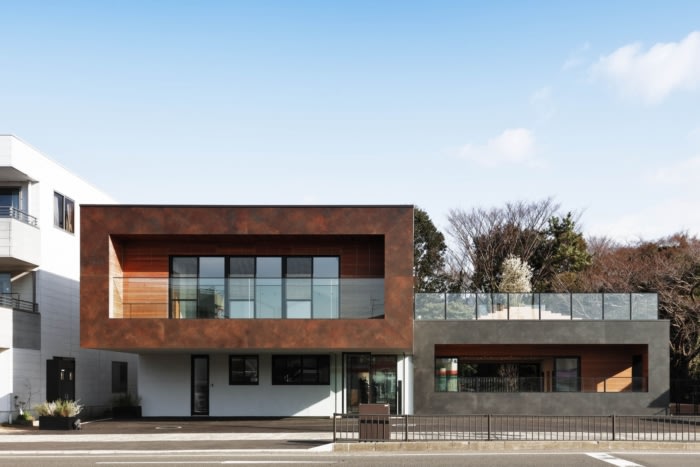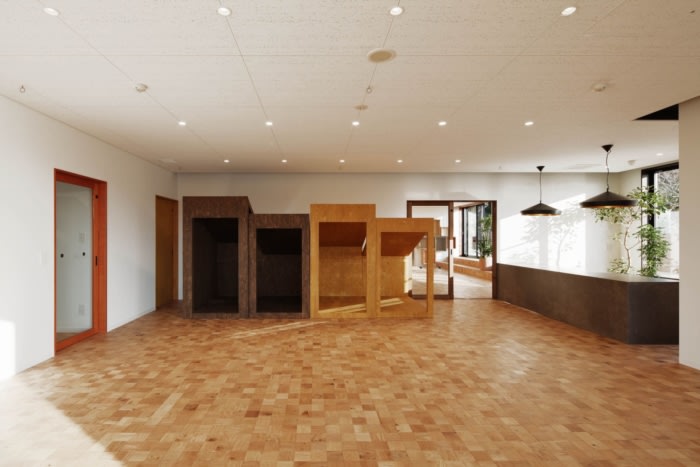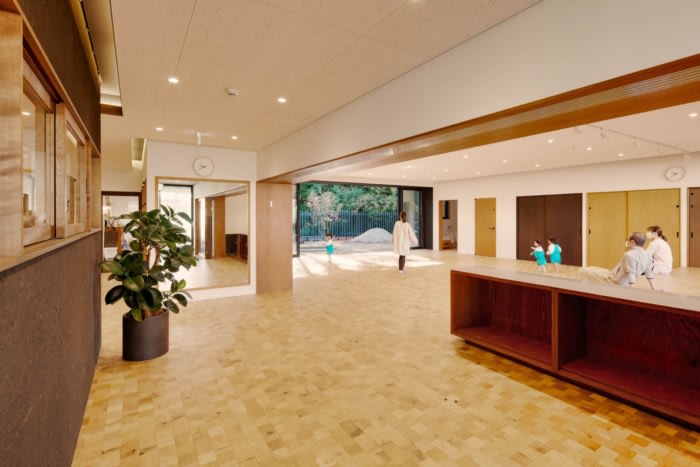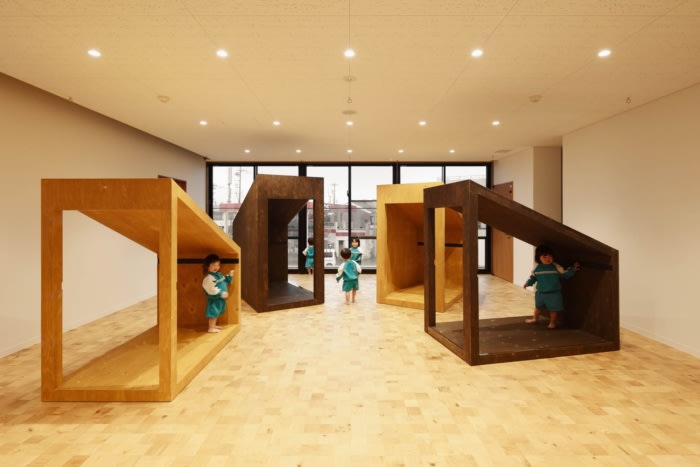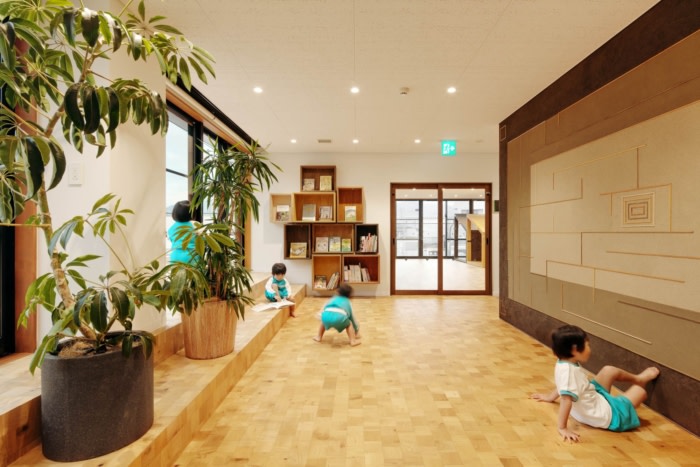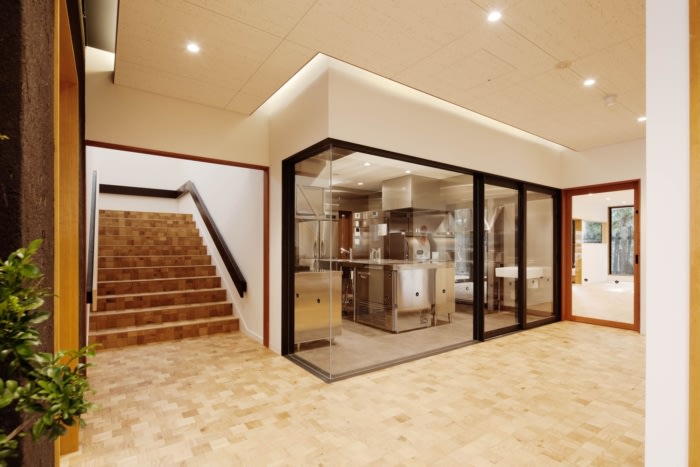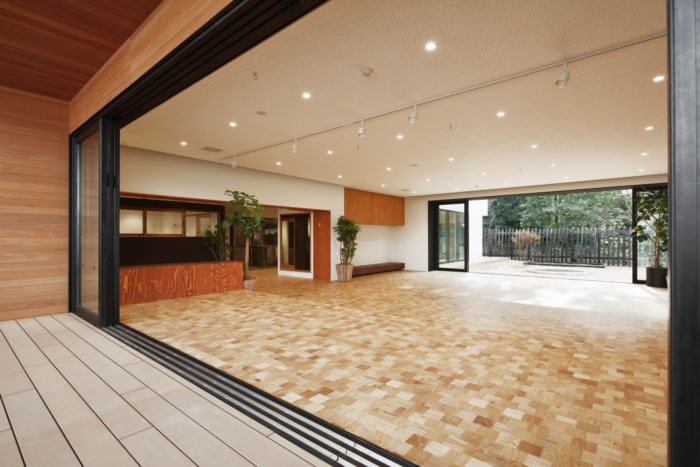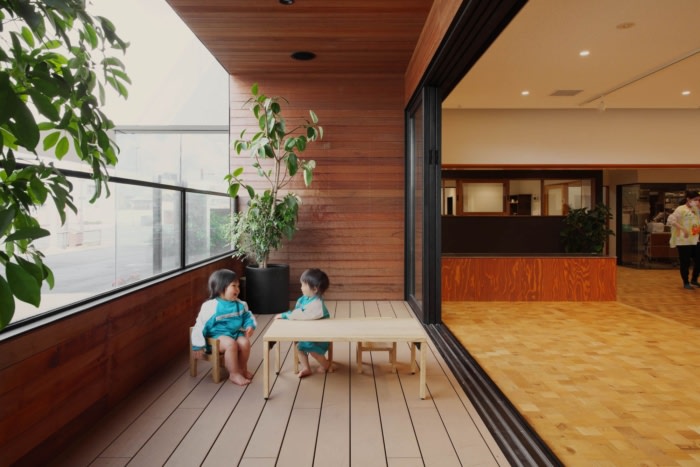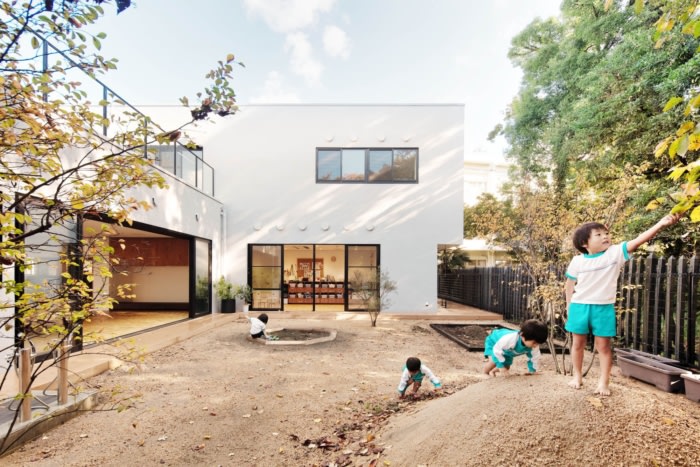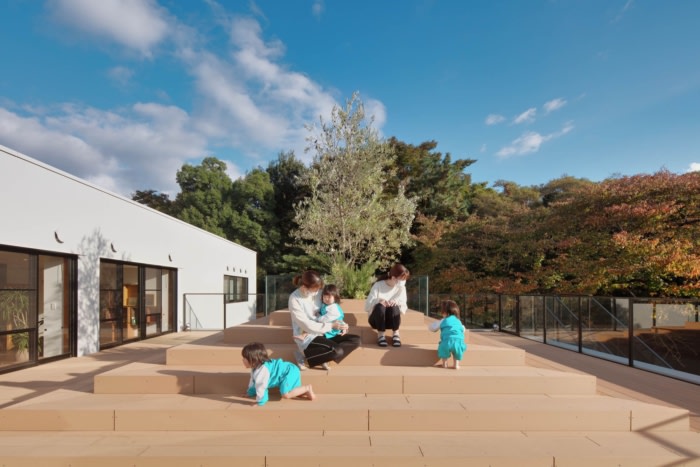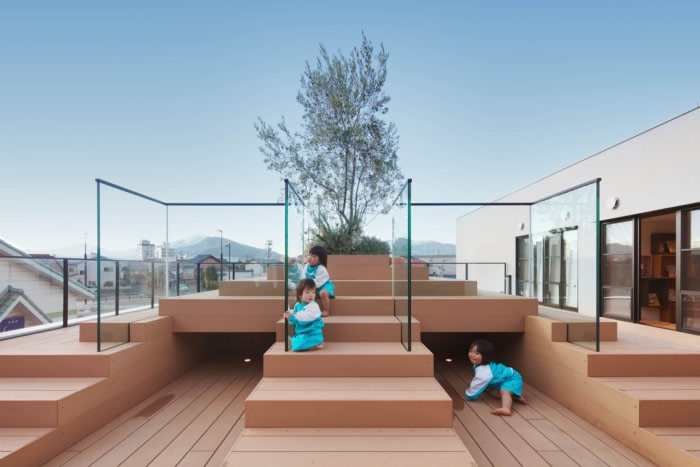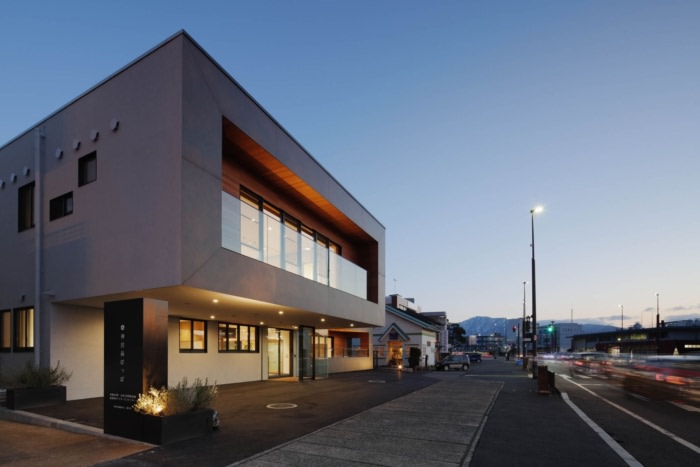JPP Nursery
HIBINOSEKKEI + Youji no Shiro collaborated on an open and minimal space for unstructured play at the JPP Nursery in Tsuruga, Japan.
Based on the concept of “a facility that learns from the community and embraces diversity,” JPP Nursery is a newly constructed employer-sponsored childcare facility located in Tsuruga City, Fukui Prefecture. Tsuruga City was once a flourishing port that served as a trading hub connecting Asia, Europe, and various regions of Japan. It was a place where people and goods from different islands and regions intermingled. JPP Nursery, situated in such a location, serves three purposes: daycare, after-school care, and post-illness childcare. The age range of the children attending this facility spans from 0 to 18 years, and both children with and without disabilities spend their time together in the same facility.
In modern society, the promotion of an “inclusive society” is encouraged, where individuals can recognize and accept differences in others. It is important to build relationships based on mutual empathy and support within an environment that fosters inclusivity, regardless of the presence of disabilities. Inclusive childcare facilities have been established, and The Ministry of Health, Labour and Welfare is actively promoting inclusive childcare. However, concerns remain about issues such as a shortage of teachers and bullying from children without disabilities, and the current implementation is limited to certain areas. In response to this, JPP Nursery aims to create a space where each function is fulfilled, allowing children to experience the local community they were born and raised in and fostering mutual understanding.
The nursery building, located near Tsuruga Port, features a pyramid-shaped deck terrace inspired by the lighthouses found in the port. This serves as a space for children to play together, encouraging various activities and increasing their physical movements. The common areas incorporate three types of clay walls made with local soil. The exterior tiles and flooring incorporate colors and patterns inspired by local buildings and plants. The fixtures, frames, and furniture are randomly colored to represent a sense of mixing. This not only expresses the idea of children “mixing together,” but also creates opportunities for them to see, touch, and experience various materials, fostering their attachment and familiarity with the local area. The community space, connected from each room, features wall mazes made of clay and a picture book corner, stimulating children’s curiosity while they play and learn together.
The guidance and training room, which tends to be closed off, is designed with a large opening on the street side allowing the children to see the town and the activities from the community. The lunchroom, which connects to the outdoor playground, incorporates fully openable doors, allowing views of the greenery of the nearby Hikawa Shrine. This not only provides an open and pleasant space for children but also allows them to connect with the surrounding environment and residents.
In this environment where children can recognize and accept differences, while developing a sense of empathy and consideration for others, they can also engage in communication with various individuals, exploring the community’s history and materials. JPP Nursery becomes a place where children can respect and appreciate each other, fostering personal growth and a sense of connection with the surrounding community.
Design: HIBINOSEKKEI + Youji no Shiro
Photography: Ryuji Inoue


